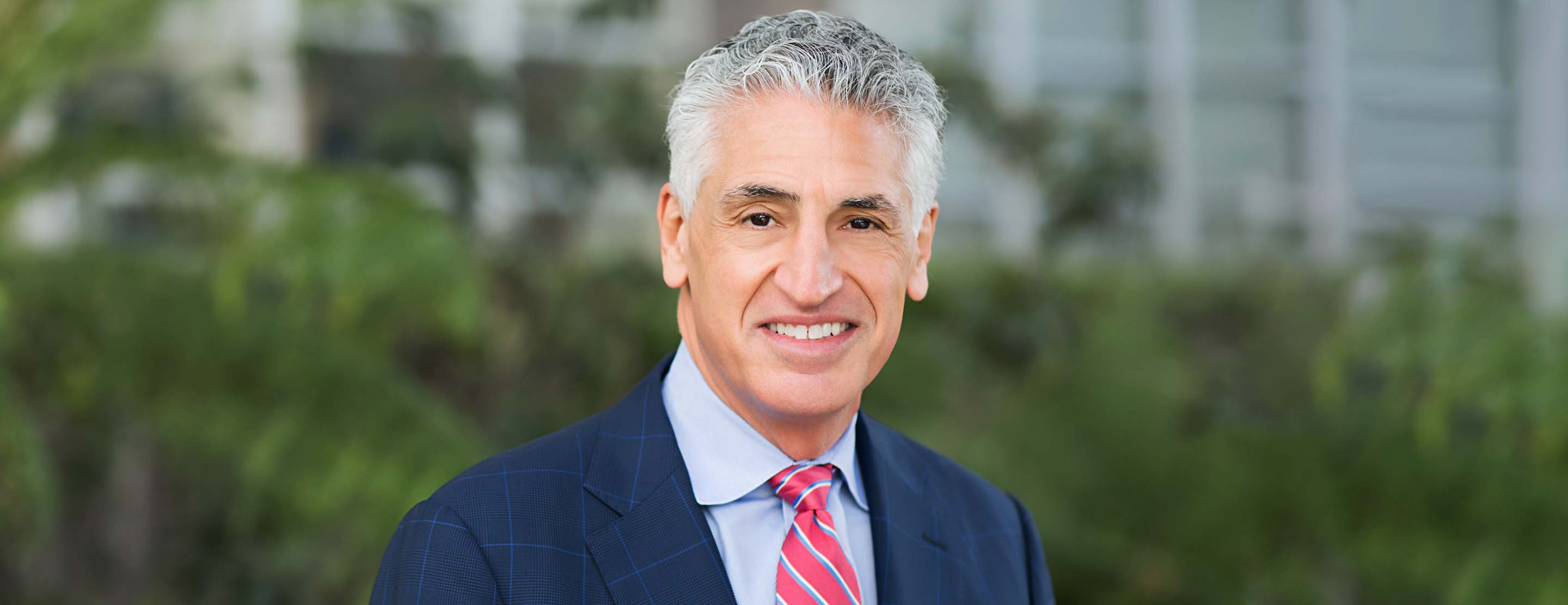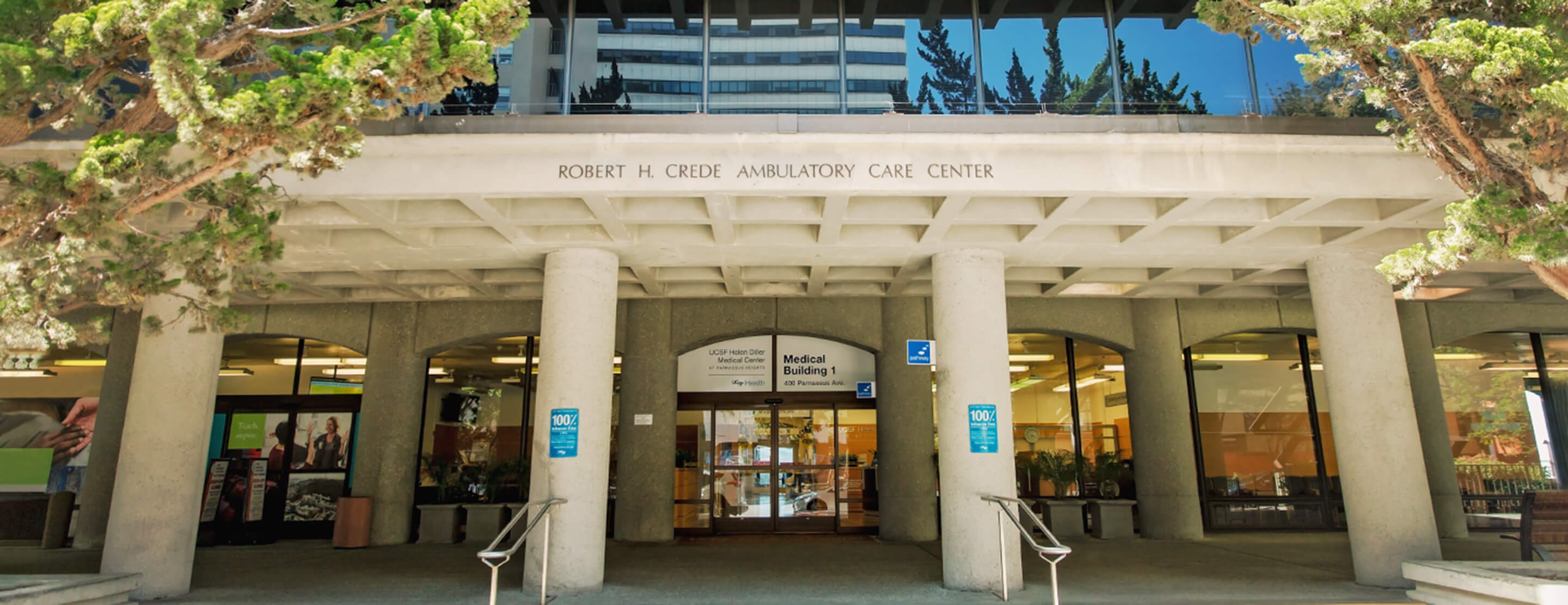Dr. Michael Conte is chief of UCSF's Division of Vascular and Endovascular Surgery. In his clinical practice, Conte specializes in treating patients with peripheral artery disease. His research includes developing technologies to improve the longevity and durability of common vascular procedures.

Doctor Q&A: Michael Conte
Q: What sparked your interest in biomechanical engineering and, later, medicine?
A: Growing up in New York, I attended a math and science high school, which is where I first became interested in engineering. Later, as an undergraduate at Boston University, I was studying biomechanical engineering when my mother got very ill and needed heart surgery. That was my first up-close look at medicine. I was struck by two things: the confidence of her surgeon and how dramatically she improved after surgery. She'd been acutely ill and, thanks to surgery, got better quickly. That made a big impression on me as a young person: the overwhelming fear of a situation that feels so out of control and the calm and confidence instilled by a surgeon who knew exactly what to do. I saw firsthand the potential of surgery to change the course of someone's life and I knew that's what I wanted to do.
Q: You've been at UCSF since 2008. What makes it an ideal place to do your work?
A: UCSF is a leader in vascular surgery. Our training program — now 50 years old — was one of the first in the country. The first surgeon ever certified in vascular surgery, Dr. Edwin J. Wylie, practiced at UCSF. His certificate in vascular surgery hangs outside my office.
That robust history makes UCSF an auspicious place for any vascular surgeon, but what I really love about working at UCSF is our blend of clinical complexity, innovation and discovery. UCSF's reputation for excellence means that other doctors frequently refer complex cases to us. I love the challenge of helping the sickest of the sick.
And, finally, as a teacher and researcher, I get to train outstanding young people to be the next generation of leaders. The gratification of a challenging clinical practice and a great research environment is unparalleled at UCSF.
Q: How might a patient benefit from coming to UCSF versus another vascular center?
A: UCSF has some distinct advantages over other hospital centers. For starters, our team is comfortable treating high-risk patients who may be refused surgery elsewhere. The vascular surgery team at UCSF has a high level of expertise in getting these patients through surgery and recovery. And, of course, those patients who aren't high-risk benefit enormously in terms of receiving safe, state-of-the-art surgery and great follow-up care with an experienced and dedicated team.
At UCSF two of our programs are internationally recognized and attract patients from well beyond the Bay Area. The first relates to diseases of the aorta: aneurysms and dissections. UCSF surgeons pioneered minimally invasive approaches for treating complex aneurysms using devices available at only a few medical centers worldwide. We also offer experienced open surgical repair for complex aortic pathologies that are not available in many centers. Our results for abdominal aortic aneurysm (AAA) repair were rated at the highest level in the state of California in last year's Leapfrog hospital survey.
The second innovative vascular program at UCSF is the Center for Limb Preservation, where patients with severe leg circulation problems, such as diabetes, are closely treated and supervised by a team of providers. Members of the team include vascular surgeons, podiatrists, a nurse practitioner, and, when necessary, specialists from other fields, including endocrinology, infectious disease and plastic surgery. In the same visit, patients see the team and make treatment decisions together.
Outside of UCSF, a person with severe peripheral artery disease or a diabetic foot can lose valuable time waiting to see three or four different specialists. At UCSF a comprehensive treatment approach addresses problems early, provides excellent vascular, podiatric and wound care, and ensures no one slips through the cracks.
Q: What's one of the biggest challenges in your field?
A: The good news is that people with vascular disease are living longer than ever, but the bad news is that many procedures don't age as well as our patients. Vascular surgeons offer all sorts of technologically complex and minimally invasive procedures to replace or open up blocked or damaged blood vessels, but these operations can cause scarring that narrows the blood vessels again. As people age, they often need multiple repeat procedures, with each one offering a declining benefit. It's less of a problem with big vessels, like the aorta, and more of a problem with smaller vessels, such as those in the extremities.
In a perfect world, we'd unblock or bypass a blood vessel and the fix would last for 20 years, which is about the lifespan of an artificial joint, for comparison's sake. But vascular surgery isn't there yet. That's why I'm so interested in understanding the vascular wound-healing process.
Q: Scarring is the body's defense mechanism, so, basically, you're fighting Mother Nature?
A: Yes. A scar is an injury or a wound the body has resolved. The body is amazing at bouncing back from a range of insults and injuries. Over a lifetime, our bodies get thousands of small and large wounds, from mosquito bites to surgical incisions. But the body scars on the inside as well as the outside and when blood vessels are "injured" during vascular procedures, the body uses scar tissue to heal. Over time, scar tissue build up in an artery can be just as damaging to the patient as their original blockage.
Q: Tell me about how you're looking to fish oil to help solve this problem?
A: Scarring is a result of inflammation, which is the body's natural response to injury. Scientists have long known that fish oil reduces inflammation. Picture inflammation like a smoldering fire. Components in fish oil trigger the body's sprinkler system, essentially dousing the embers. With funding from the National Institutes of Health and in collaboration with Dr. Tejal Desai, a bioengineer at UCSF, and Dr. Charles Serhan at Harvard University, our lab developed therapeutic biomaterials and nanotechnology that uses fish-oil-derived compounds to enhance vessel healing and reduce scar-tissue formation.
One device we are working on is a thin, biodegradable film laced with these compounds. During surgery, the physician places the film at or near locations where scarring is likely to become problematic, such as where a vein graft is attached to redirect blood flow around a blocked or narrowed artery. The goal is that the film slowly releases anti-inflammatory compounds as the wound heals, minimizing scar tissue. Eventually, the film dissolves inside the body. We are testing this technology in animals and the results are very exciting.
Q: What evolution in the field do you hope to see in your lifetime?
A: Ideally, I'd like to put vascular surgeons out of business. What if we could control or stop narrowing of the arteries without surgery? As it stands, arteriosclerosis, or the narrowing of the arteries, is a very slow process. What if we could slow it down even more so that a person could live out his or her life without the disease ever causing a problem? To do that, we need better tools to identify those patients who are most likely to progress and learn how to treat them earlier.
Q: What part of your job do you most enjoy?
A: It's an amalgam. I get to experience the acute challenge of performing complex operations. I get to take people through a medical crisis and see them safely on the other side. I get to teach smart, motivated young people. And I have the excitement of bench research, where I never know what I am going to find. In short, I am never bored.
Q: What do you enjoy doing when you're not practicing medicine?
A: My wife and I have three teenagers and we love to play tennis together as a family. A little tennis with family and friends and a nice meal makes for the perfect Sunday.









